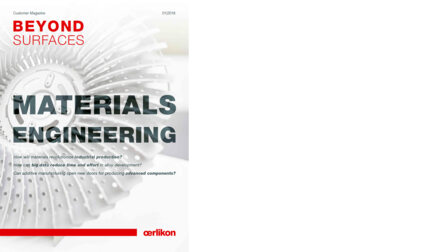Moabit, Berlin. The legendary gas turbine plant at Huttenstraße. Ayhan Cetin walks through the final assembly hall. In the middle of the hall, an order is being completed for an SGT5-4000F turbine. In a few weeks’ time, this mighty, high-performance machine will be shipped from nearby Westhafen to the Middle East.
Research engineer Cetin now walks up the stairs to a gallery. From here, we see an area at the rear of the hall surrounded by white sound barriers. This is the gas turbine test bed. This, says Cetin, is where current products and new technologies are “put through their paces.” Several thousand measuring points provide information about performance, efficiency, effectiveness, emission levels and much more. Outsiders can only guess at what goes on behind these sound barriers. What we learn from Cetin is that the facility’s water brake plays a vital role.
Extreme pressure creates challenges
The water brake consists of a steel case that contains a rotor comprising multiple wheel discs. The material: a low-alloy steel. Cetin can talk about the water brake for hours, although his explanations are more suited to the experts – just as when he waxes lyrical about the theory of boundary layer friction in turbulent flow. Put simply, high shear and friction forces cause thermal energy to be produced and extracted from the heat transfer medium (water). Depending on the regulatable flow rate and the effective frictional surface, a torque is created that works against the gas turbine that’s being tested and thus absorbs the energy produced.
In 2010, Cetin was appointed system supervisor of the water brake system at the Berlin gas turbine test bed, the largest of its kind in the world. The challenges associated with a facility of this size are huge. The water brake, in particular, is subject to extreme stress and must be inspected constantly to ensure uninterrupted operation. Cetin is therefore all the more delighted to have recently succeeded in optimizing the water brake in collaboration with Oerlikon Balzers. This involved making the wheel discs more hard-wearing. The process: plasma nitriding. The product: BALITHERM IONIT. The result: longer inspection intervals. But let’s go back to the beginning.
Siemens is one of the world’s leading companies in the field of power generation, and gas and steam turbines form the core business of the technology group. To define its portfolio, it is testing prototypes of new products and technologies. Development times and costs are deciding factors when it comes to the profitability of any company, and the high availability of the gas turbine test bay is therefore essential for Siemens PG.
In a conventional gas turbine power plant, the energy created is absorbed by the generator. In the Berlin gas turbine test bed, however, this is not the case. Here, no continuous power generation can be guaranteed, and thus it cannot be fed into the grid. The mechanical output of the gas turbine is therefore converted into waste heat via the water brake, which in effect replaces the generator and absorbs the energy produced.

